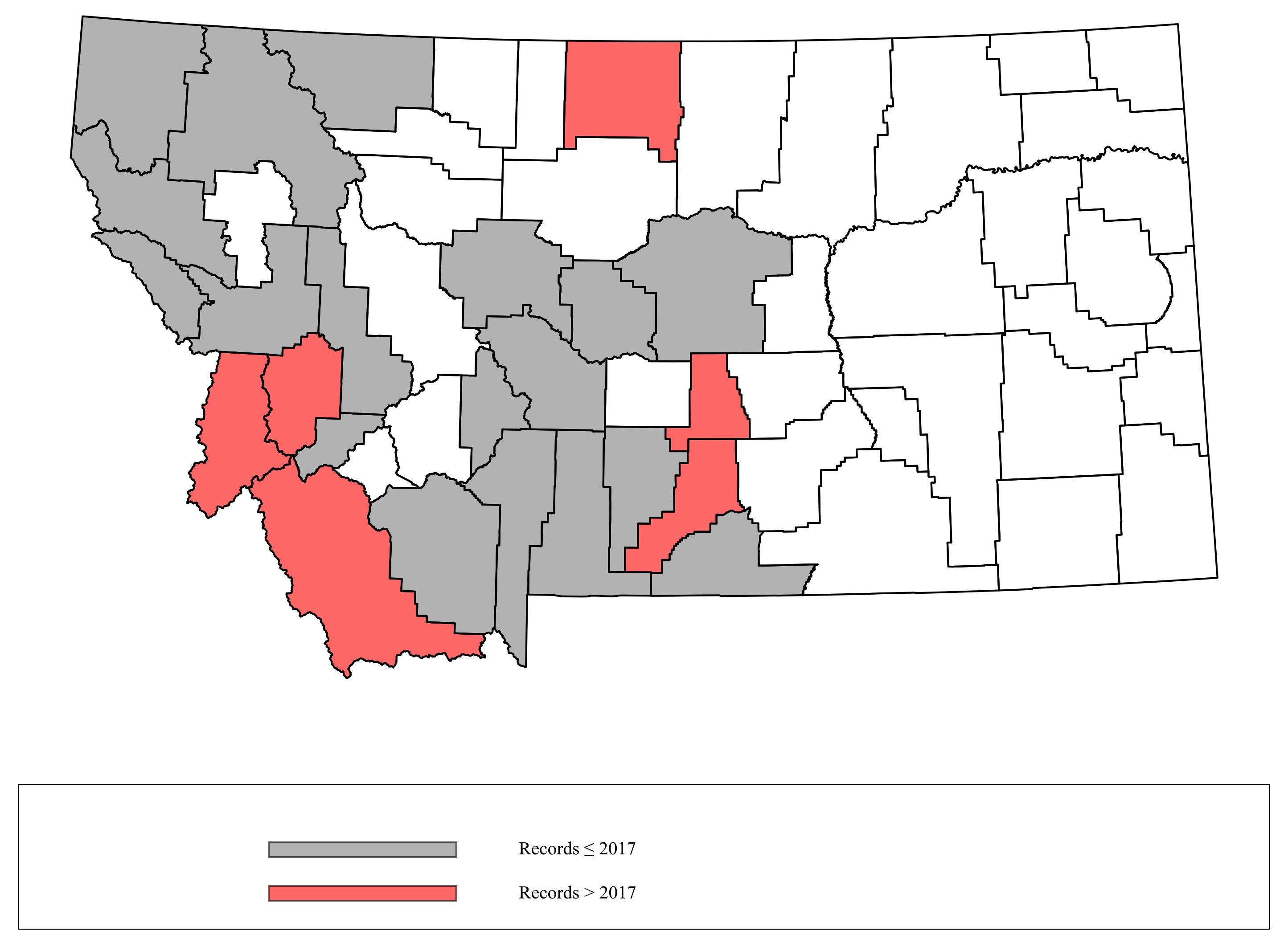Bumble Bees of Montana
Bombus (Psithyrus) flavidus Eversmann, 1852 Fernald Cuckoo Bumble Bee
Bombus flavidus is a social parasite known from colonies of B. rufocinctus, B. occidentalis, B. appositus, and members of the subgenus Pyrobombus. Morphological and DNA evidence supports the synonymy of Bombus fernaldae from North America and B. flavidus from Europe and Asia, so the two are now considered members of the same species (Williams et al. 2014).
Bombus flavidus is uncommon but seems to be widespread across North America from New England to the Pacific Coast (Koch et al. 2012). Documentation of its presence is scattered, with records from the boreal and temperate forests of the Northeast, the Appalachian Mountains, the Mountain West, and the Pacific Coast (Williams et al. 2014). In Montana, records are restricted to the mountainous western half of the state.
Montana Distribution: Records from Dolan et al. (2017) (gray) with correctionsand additional records added after publication (red).

Diagnosis
Like all species in the subgenus Psithyrus, females of B. flavidus lack pollen baskets on the hind tibia. Characters used to identify this species include black hair on the face and yellow hairs on the top of the head. Often abdominal T6 is tightly curled under the abdomen, so that the tip of the abdomen actually points to the front of the body. There are small, barely noticeable ridges on abdominal S6.
Similar Species
This species is mostly easily confused with B. insularis and B. suckleyi, the other two species in the subgenus Psithyrus known from Montana. Bombus insularis has yellow hairs at the bases of the antennae as well as on the top of the head and B. suckleyi has no yellow hair on the face or the top of the head. Both B. insularis and B. suckleyi have much larger ridges on abdominal S6.
